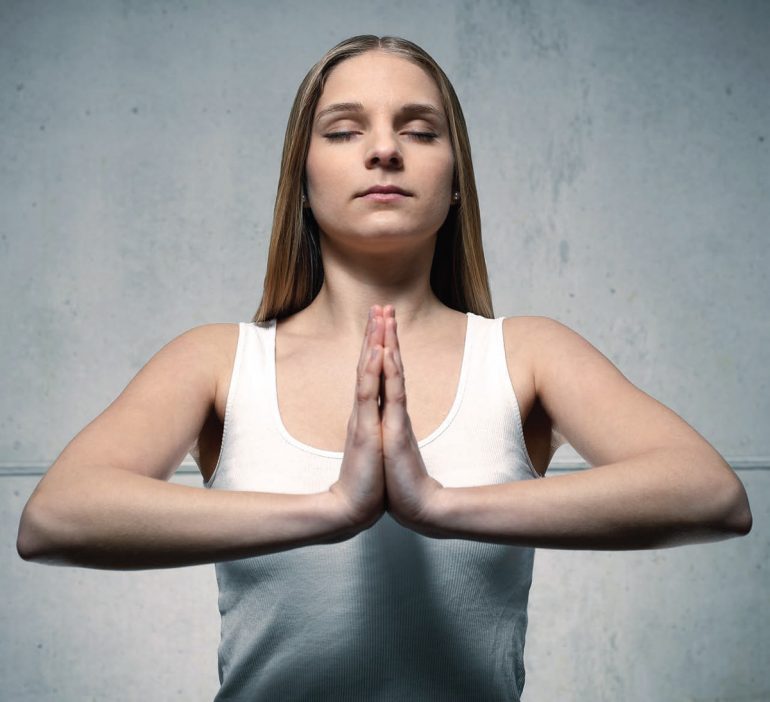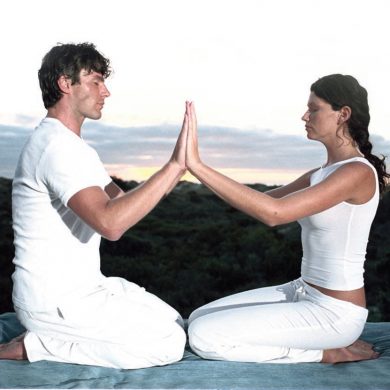“In his classic work the Yoga Sutras, Patanjali describes yoga as “the progressive quieting of the fluctuations of the mind.” He then tells us that through dedicated practice and the cultivation of detachment, we will stop identifying with the thoughts, feelings, and sensations that can cause us so much emotional pain – and we will open to an experience of our true self. “
 As Patanjali and so many other wisdom teachers have taught, who we really are goes far beyond the labels and titles we commonly use to define ourselves. When asked the question “Who are you?” most people identify themselves in terms of their positions, roles, and relationships. You might answer, “I am a math teacher” or “I am a mother.” You may identify with where you live, saying, “I’m a New Yorker.” You may also define yourself in terms of your political affiliations, your hobbies, or your culture. Although we all have a tendency to identify ourselves with the external aspects of our lives, yoga encourages us to go deeper into our being and find the inner place that is beyond temporary anchors. This is the source of all energy and creativity in life.
As Patanjali and so many other wisdom teachers have taught, who we really are goes far beyond the labels and titles we commonly use to define ourselves. When asked the question “Who are you?” most people identify themselves in terms of their positions, roles, and relationships. You might answer, “I am a math teacher” or “I am a mother.” You may identify with where you live, saying, “I’m a New Yorker.” You may also define yourself in terms of your political affiliations, your hobbies, or your culture. Although we all have a tendency to identify ourselves with the external aspects of our lives, yoga encourages us to go deeper into our being and find the inner place that is beyond temporary anchors. This is the source of all energy and creativity in life.
The true purpose of yoga is to discover that aspect of your being that can never be lost. Your job may change, your relationships may change, your body may change, your beliefs may change, your desires may change, and your ideas about your role in the world may change – but the essence of who you are is the continuity of awareness that has no beginning or end.
Meditation is a core element of yoga because it takes us beyond our mind’s habitual thoughts and puts us in touch with our essential spiritual nature. As you’ve no doubt noticed, your mind is a thought-generating organ. Thought forms perpetually arise in your awareness. If you stop your thoughts with the intention of creating stillness in your mind, your mental activity may quiet for a few moments. This will be short-lived as your thoughts will almost certainly start up again at full speed.
Breaking free from the prison of memory
All thoughts can be classified as either memories or desires. When your mind is active, you are either thinking about something that happened in the past or you are anticipating something occurring in the future. The Sanskrit word for memory or past impression is samskara while the word for desire is vasana. Impressions give rise to desires. If you see an advertisement for a flashy car, tropical vacation spot, or designer suit, an impression is born in your mind that may give rise to a specific desire. As a result of this desire, you are compelled to take some new action, such as going to the car showroom, calling your travel agent, or visiting your local boutique. The action that emerges from the desire is called karma. This endless cycle of impressions giving rise to desires, giving rise to actions, resulting in new impressions, is the circuitry that keeps your mind perpetually active. We can think of this circuit of samskara, vasana, and karma as the software of your soul. As long as you are thinking, your mind is churning through the cycle of action . . . impression . . . desire . . . action . . . impression . . . desire. People frequently get caught in habitual ruts of thinking, believing that they are stuck in a situation because they are not able to imagine any other possibilities.
Meditation is a technology that enables you to temporarily escape from this cycle. Through the process of gently focusing your attention (known in yoga as dharana) while innocently witnessing the thought-forms that come and go in your mind (dhyana), you enter into the gap between thoughts, glimpsing the domain of unbounded awareness (samadhi). Taking your mind from constricted to expanded awareness, meditation offers the most direct path to awakening to your own infinite potential.
While there are many kinds of meditation, they all serve to take you out of the conditioned mind and open up access to the non-conditioned mind. This is accomplished by experiencing a thought in its less distinct, more refined aspects until eventually you experience the thought as it emerges from the non-local field of your awareness. As you become increasingly familiar with the experience of thoughts condensing from consciousness, your identity begins shifting from your mind to your soul.
Going Beyond the Mind In the yogic tradition, meditation classically involves the use of a mantra or primordial sound. The word mantra means instrument or vehicle of the mind. Mantras are used to take your awareness from engagement in the changing realm of life to immersion in the expanded state of being that is beyond beginnings and endings. These vibrations, used for thousands of years to quiet mental activity, are pleasing, resonant sounds.
Introducing a mantra temporarily interrupts the incessant association process that keeps the mind active, allowing you to glimpse the silent space between your thoughts. This starts the transformation of your identity from mind to spirit.
“We teach a mantra meditation technique called Primordial Sound Meditation, which assigns a person one of 108 mantras based upon the date and place of a person’s birth. This primordial sound can be used as a meditation vehicle to take you back through the doorway from individuality to universality, which is the ultimate goal of meditation. “
The best-known mantra is the sound Aum or Om, traditionally said to be the sound the universe makes when it manifests from potential to perceptual. Using the sound that represents the junction point between local and the non-local can take your awareness back to the field of awareness that gives rise to the mind. We teach a mantra meditation technique called Primordial Sound Meditation, which assigns a person one of 108 mantras based upon the date and place of a person’s birth. This primordial sound can be used as a meditation vehicle to take you back through the doorway from individuality to universality, which is the ultimate goal of meditation.
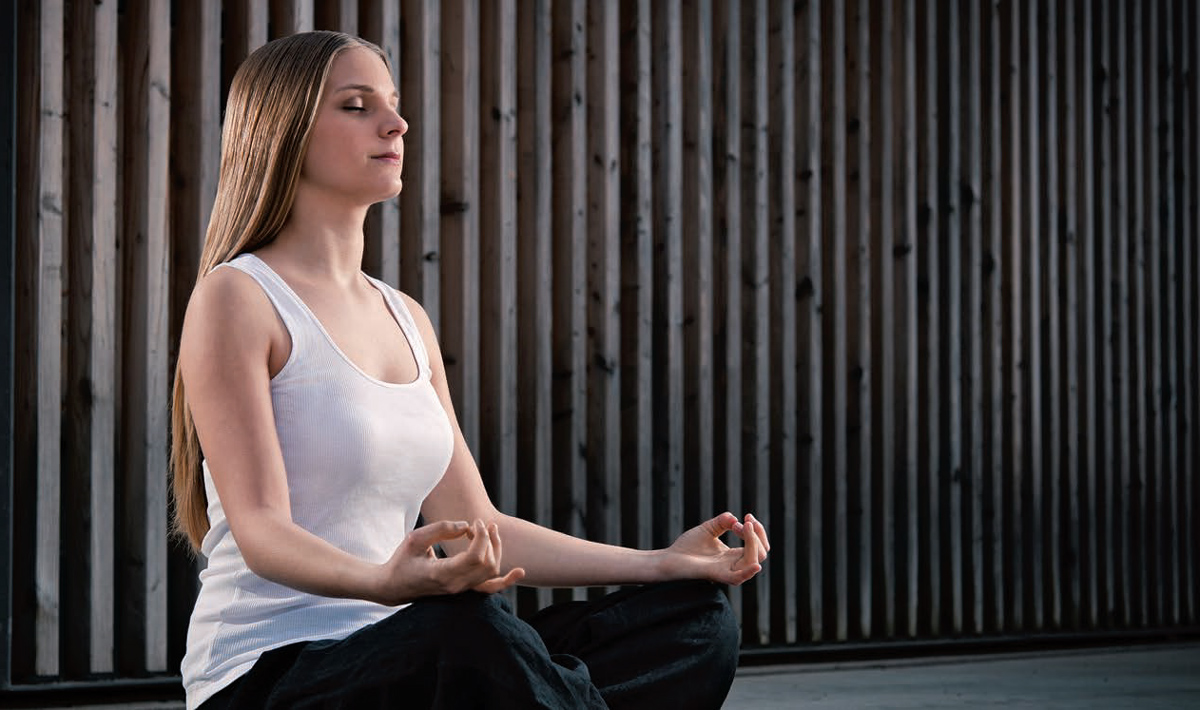
Chakra meditation
A different type of meditation involves toning mantras aloud to create a healing resonance in the mind and body. There are specific mantras and vibrations associated with each of the seven energy centers in the body, known as chakras, the major junction points between consciousness and the body. envisioned by the ancient seers as wheels or vortices of life force, they have sometimes been associated with major neural networks or hormonal systems.
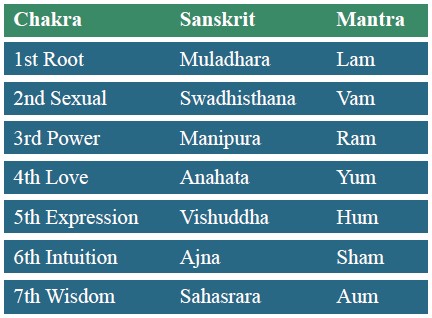
Each center identifies a core human need. When the center is open, the energy that flows through the chakra allows you to meet those needs with less effort. If there is a blockage in that area of the mind-body system, energy becomes stagnant and your intentions are more difficult to actualize. You can activate each center by putting your attention in the location of the chakra and sounding the associated mantra aloud.
In the following description of the seven chakras, we explain the spiritual law that governs each chakra. These spiritual laws are principles of consciousness that we can use to cultivate greater harmony, happiness, and wellbeing in our lives and in the world.
The first center: the root chakra
The root chakra, known in Sanskrit as muladhara, is located at the base of the spine. It governs your most basic survival needs. When this chakra is clear and energy flows through it freely, we feel secure and confident that we can easily fulfill our needs. on the other hand, blockage in this area can cause us to feel anxious and worried.
The spiritual Law of Karma governs the first energy center. on the physical plane every action you perform results in a corresponding reaction. To maximize the possibility that your actions generate evolutionary reactions, you can use your body as a choice-determining instrument. Consider the possibilities in front of you and listen to the signals from your body. These sensations generating from the root chakra are either comfortable or uncomfortable. Your body evaluates every possible decision in terms of its likelihood to meet your needs for safety or increase the level of threat you experience. The first chakra, which connects you with the earth, provides essential information as to the potential nourishment or toxicity that is available to you as a result of the actions you are taking.
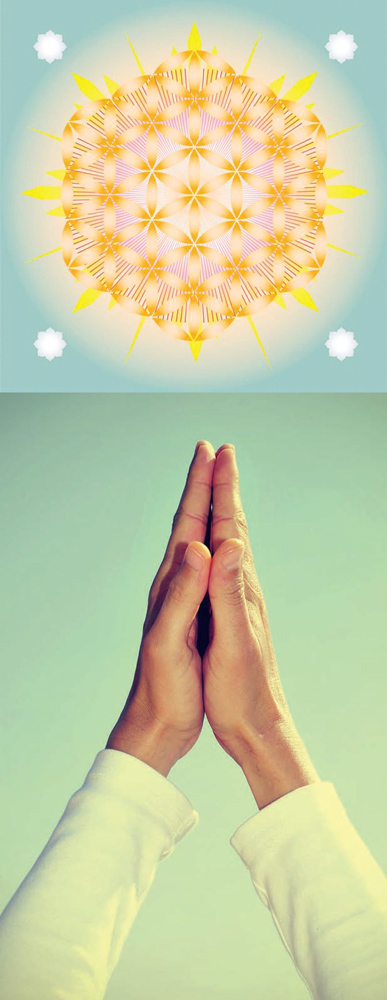
The second center: creativity chakra
The creativity chakra, called swadhisthana, is associated with creativity in all its expressions. Located in the area of your sexual organs, the energy of this center can be used for biological reproduction. When channeled into higher energy centers it fuels the creative force that enables you to paint a beautiful picture, build a business, or create a life of love and abundance.
The Law of Least Effort is lively in the second chakra. When your vital energy is flowing through your center of creativity, you co-create your life. The solution to every problem is rarely on the level of the problem. rather, it comes from a deeper domain of creativity. Creativity is the process of taking the same raw material and creating different contexts and relationships between the components. For example, when a composer creates a new piece of music, he is using the same notes in a new relationship with one another, resulting in the emergence of something that did not exist before. The second chakra utilizes the raw material of the root chakra to create the world anew each day.
The seven spiritual laws of Mantra meditation
You can activate each energy center by putting your attention in the location of the chakra and sounding the associated mantra aloud.
Sit in a comfortable, upright position. Close your eyes and visualize the site of the energy center. Take a deep breath and on the exhalation, chant the mantra in one long syllable. Feel the sensations in your body and notice the sense of alertness and calm in your mind after each mantra. envision energy flowing effortlessly from the base of your spine through the different energy centers and rising up through the top of your head. Notice how you feel in the meditation and how it affects you when you go about your daily activities.
The third center: energy chakra
The energy chakra, manipura, is localized in your solar plexus. It is the seat of your power in the world. When this center is open and flowing, you are capable of translating your intentions and desires into manifestation. When it is blocked, you feel frustrated and ineffectual.
The Law of Intention and Desire governs the third chakra. The seeds of intentions and desires reside in your personal soul. Nourishing the seeds you wish to germinate with your attention will lead to their full expression. It is important to be clear about your intentions so you are not surprised when they bear fruit. The process of manifesting your desires is to first bring them into consciousness, followed by expanding your awareness through meditation, and finally releasing your intentions and detaching from the outcome. You can control your actions, however you cannot control the fruit of your actions. keep your life energy flowing freely through your third chakra and the light and heat of your intentions will radiate on the world.
The fourth center: heart chakra
The heart chakra represents the unifying energy of love and compassion. known as anahata, it is located at the center of the chest. The heart chakra is dedicated to overcoming separation and division. When the heart center is blocked, there is a sense of alienation from others. When the heart center is open and flowing, you feel connected at a deep level to all beings in your life.
The Law of Giving and Receiving governs the heart chakra. Love can take many different forms at different stages of life. The love of child for her mother is different than a mother’s love for her child. A friend’s love is different than that of a passionate lover or the love of a student for his teacher. however so, the common thread in each of these expressions of love is the impulse to unify – to overcome separation. This is the nature of the heart.
Every act of giving is simultaneously an act of receiving. each time you welcome a gift into your life, you are providing the opportunity for someone to give. Just as a healthy physical heart receives blood from the periphery which it then oxygenates and pumps back out, your emotional heart stays healthy by receiving and giving love in all its forms.
The fifth center: expression chakra
The throat chakra, called vishuddha in Sanskrit, is the center of expression. When the fifth chakra is open and flowing, you have the confidence that you are capable of communicating your needs. When the fifth chakra is obstructed, a person will often feel that they are not being heard. In order to feel alive and empowered, it is important that this energy center is clear. Blockages in this area are often associated with thyroid problems or chronic neck pain.
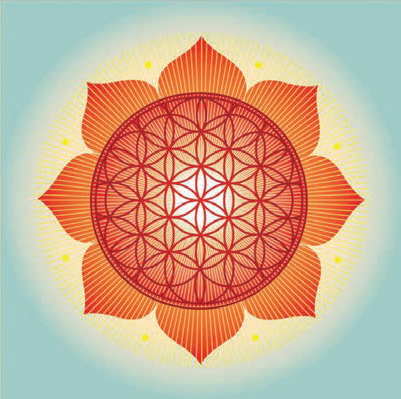
The Law of Detachment governs the throat chakra. An open fifth chakra enables you to express your truth without concern for censors or critics. This does not mean you say things that are intentionally hurtful or insensitive. on the contrary, people with open centers of communication are skillful in expressing their needs in ways that are life supporting. Anxiety over how people will react to your views does not arise when energy is flowing freely through the chakra of expression.
The Law of Detachment reminds you that you can choose your words and actions, but you cannot control the response to your words and action. When your intentions are clear, and your heart is open, you will spontaneously demonstrate right speech trusting that the universe will handle the details.
The sixth center: intuition chakra
The intuition chakra, known in Sanskrit as ajna, is located in the forehead. It is the center of insight and intuition. When this center is open, you have a deep sense of connection to your inner voice, and feel guided in your choices. When blocked, there is a sense of self-doubt and distrust. The opening of this chakra is usually associated with a clear sense of connection to ones dharma, or purpose in life.
The Law of Dharma, or Cause and effect, governs the sixth chakra. You have within you a wise voice guiding you to express the highest aspects of your nature. Listen to this still inner voice, which is guiding you to manifest your full potential. Quiet the internal turbulence that is filled with the voices of others so you can identify the sound of your own soul.
It has only one desire – for you to remember your essential nature as a spark of the divine.
The seventh center: consciousness chakra
The consciousness chakra, known as sahasrara, is visualized as a lotus flower at the crown of the head. When the lotus unfolds its petals, the memory of wholeness is restored. remember that your essential nature is unbounded, and that you are spirit in disguise as a person. This is the full expression of yoga – the unification of being with action, of universality with individuality.
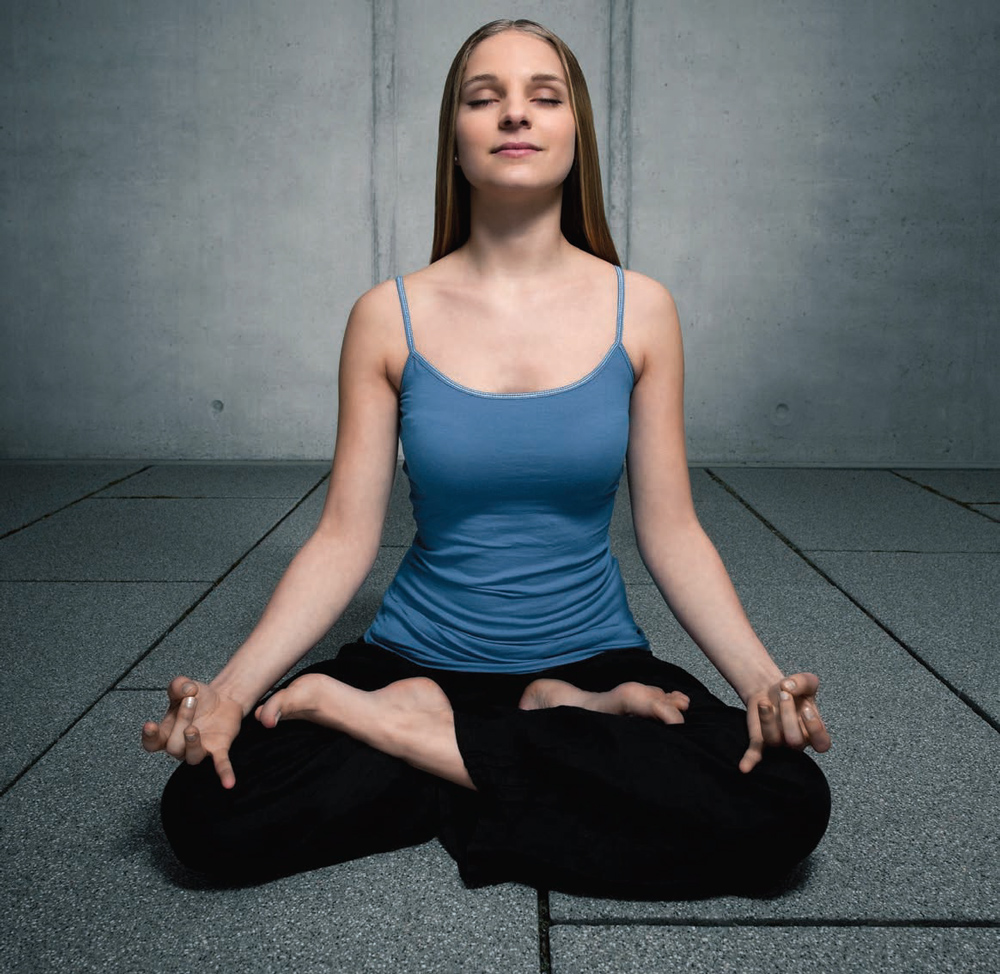
The Law of Pure Potentiality governs the seventh chakra. When your roots are receiving nourishment from the earth in the first chakra, your creative juices are flowing in the second, your intentions are empowered in the third, your heart is open and exchanging love with those around you in the fourth, you are spontaneously expressing your highest self in the fifth, you are in touch with your inner voice in the sixth, only then, does energy move into the crown chakra and you remember your essential nature as infinite and unbounded. The thousand-petaled lotus flower unfolds and you know yourself as a spiritual being temporarily localized to a body and mind.
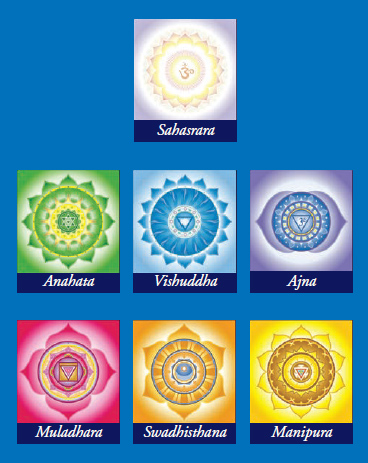
“Meditation is the exploration of your inner world. Yoga encourages you to be as familiar with your inner world of thoughts, feelings, memories, desires, and imagination as you are with the outer world. When you can move through both the inner and outer domains of life with freedom and joy, you fulfill the highest purpose of yoga.”
The Yoga of Meditation The Upanishads tell us, “As great as the infinite space beyond is the space within the lotus of the heart.” From the time of your birth, you have been called to explore the world outside of you. Meditation is the exploration of your inner world. Yoga encourages you to be as familiar with your inner world of thoughts, feelings, memories, desires, and imagination as you are with the outer world. When you can move through both the inner and outer domains of life with freedom and joy, you fulfill the highest purpose of yoga.
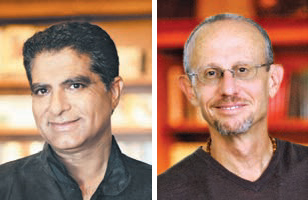
Deepak Chopra, MD, FACP, founder of The Chopra Foundation, a non-profit entity for research on well-being and humanitarianism, and Chopra Global, a modern-day health company at the intersection of science and spirituality, is a world-renowned pioneer in integrative medicine and personal transformation. Chopra is a Clinical Professor of Family Medicine and Public Health at the University of California, San Diego and serves as a senior scientist with the Gallup Organization. chopra.com
David Simon, MD, was an author, physician, and co-founder of The Chopra Center for Wellbeing, California. Since his association with Deepak Chopra in the 1980’s, Dr. Simon became one of the foremost authorities in effective and appropriate fusion of western and eastern healthcare practices. He was dedicated to evolving the prevailing health care system to a “healing system.”

